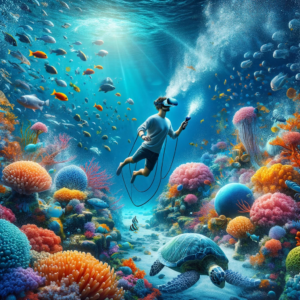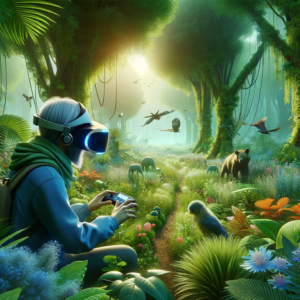Virtual reality (VR) provides access to seemingly unreachable things. Although virtual reality (VR) technology has revolutionized many industries, travel is one where its effects are especially noticeable. Imagine finding the world’s hidden gems—places that most people haven’t been able to access and haven’t yet had the chance to explore. Virtual reality travel is appealing because technology enables us to experience thrilling, immersive journeys to some of the world’s most isolated locales without ever leaving the familiar surroundings of home.
Revealing the Inaccessible: A Novel Era of Discovery
Accessing the most remote locations on Earth has perpetually captivated the imagination of adventurers and explorers. These locations, from the highest unclimbed peaks to the deepest ocean tunnels, arouse mystery and awe. These hidden treasures can now be discovered thanks to virtual reality technology, which provides a first-hand experience previously exclusive to the bravest adventurers.
Investigating the Mariana Trench in the Ocean’s Depths
Few people have ventured to the deepest region of the world’s oceans, the Mariana Trench. Its strange life forms and alien-like sceneries are unique to see. We can now explore these depths with VR. Imagine seeing geological marvels buried away for millennia, floating in the pitch-black waters, and watching bioluminescent creatures glide by.
The Himalayan Mysteries: The Peaks of the Unclimbed
Many places in the Himalayas, home to the highest peaks in the world, still need to be made available to climbers. In addition to being physically demanding, these unclimbed peaks are frequently prohibited for political or environmental reasons. Through panoramic views of immaculate landscapes and an understanding of why these areas have stayed unspoiled, virtual reality travel can take us to these spectacular heights.
Antarctic Wonders: The Isolation of the Poles
Extremely beautiful and isolated, Antarctica is the coldest, driest, and windiest continent. It is of great scientific and environmental interest because of its enormous ice sheets and distinctive biodiversity. VR trips to Antarctica provide visitors the chance to walk across ice fields, see seals and penguins in their native environments, and gain an appreciation for the significance of this far-flung region in the world’s ecosystem.

Chornobyl and North Sentinel Island are the Forbidden Zones.
Specific locations are unreachable because of artificial conditions. One such location is the exclusion zone surrounding Chornobyl, the scene of the devastating nuclear disaster. VR may transport us to this area, displaying the environmental effects of the calamity and the unsettling beauty of a world bereft of human habitation. Similarly, North Sentinel Island, off-limits to visitors and home to an uncontacted culture, can be politely viewed through virtual reality from a distance, providing insights into a way of life entirely cut off from contemporary society.
VR Travel’s Future: Sustainable and Ethical Exploration
It’s critical to take the ethics and sustainability of virtual reality travel into account as we set out on these excursions. With the use of this technology, exploration is possible without endangering delicate ecosystems or upsetting nearby inhabitants. It can encourage conservation efforts and increase awareness of the importance of protecting these unspoiled landscapes.
Conclusion: Virtual Reality’s Endless Possibilities
Many wonders in the world are either too far, too dangerous, or too protected to be visited in person. These unexplored areas are made accessible through virtual reality travel experiences, which present a fresh angle on the richness and beauty of our world. They remind us of the value of saving these locations for future generations and the contribution technology can make to our understanding and safeguarding of the environment. In addition to sating our curiosity, our continued exploration of these virtual frontiers strengthens our bond with the earth.
This subject uses people’s passion for travel, the attraction of remote locations, and the technological marvels of virtual reality. It will appeal to a broad audience interested in travel, technology, and the environment because it combines adventure, environmental concern, and cutting-edge technology.
